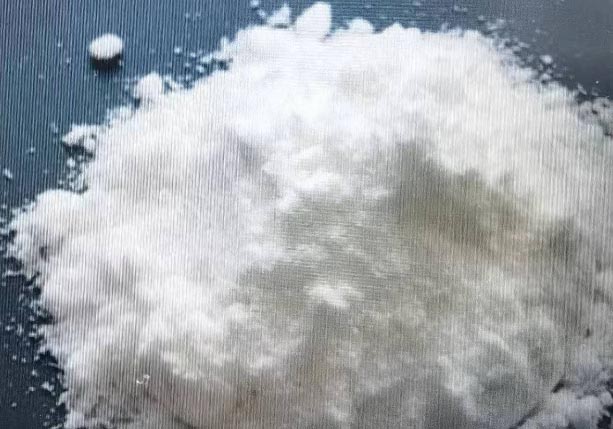Hexametaphosphate
What is Sodium Hexametaphosphate?
Sodium Hexametaphosphate is an inorganic polyphosphate salt holds multifaceted applications, serving as both a corrosion inhibitor and an emulsifying agent. Hexametaphosphate is utilized as a dry powder dispersion agent, effectively preventing the cohesion of clay platelets and promoting improved soil consistency.
Hexametaphosphate functions as a crucial dispersing agent in the realm of paint production. When introduced, it has the capacity to absorb water, leading to an increase in viscosity. Within the paint and coating industry, the employment of sodium hex contributes to effective dispersion of components, including resins, oils, and emulsions. Consequently, this compound plays an essential role in optimizing the formulation and quality of various coatings.
Physical Properties of Sodium Hexametaphosphate
This inorganic polyphosphate salt is characterized by its white crystalline appearance, devoid of any noticeable odor. The compound’s refractive index, a measure of how light is bent when passing through it, is recorded at 1.482. Sodium Hexametaphosphate showcases a pH value of 8.6, indicating its slightly alkaline nature.
It possesses a high solubility in water, which means that it can readily dissolve when mixed with water, forming a homogeneous solution. Hexametaphosphate stands in contrast to its behavior in organic solvents, where it is classified as insoluble. The solubility of Sodium SHMP in water plays a pivotal role in its application as a dispersion agent, as previously discussed.
Chemical Information of Sodium Hexametaphosphate
Hexametaphosphate has the chemical formula (NaPO3)6. It is a compound that falls within the category of sodium polyphosphates. The formula itself signifies that this compound consists of a gathering of sodium polyphosphate polymers, with each molecule composed of repeating units of NaPO3. These repeating units contribute to the overall structure and properties of the compound.
At its core, Sodium Hexametaphosphate is a water-soluble polyphosphate glass. This description highlights its unique chemical behavior when it interacts with water. Polyphosphate glass alludes to the compound’s amorphous, glass-like nature, characterized by the arrangement of polyphosphate chains. These chains are composed of interconnected phosphate groups linked together through oxygen atoms, forming a complex structure.
What is Hexametaphosphate Made Of?
Hexametaphosphate is a compound that is created through a distinct manufacturing process involving specific raw materials. The primary components required for its production are soda ash and food-grade phosphoric acid.
Soda ash is chemically known as sodium carbonate. It serves as one of the key starting materials in the production of sodium hexametaphosphate. This compound provides the sodium component essential for the formation of sodium polyphosphate polymers. The inclusion of soda ash in the manufacturing process ensures the presence of sodium ions in the final hexametaphosphate product.
Food-grade phosphoric acid, which is derived from phosphate rock, serves as another critical component. Phosphoric acid is carefully processed to meet food-grade standards, ensuring its suitability for various applications in the food and related industries. The phosphoric acid contributes the phosphate groups necessary for the formation of polyphosphate chains within the hexametaphosphate structure.
The production process of hex involves a thermal method. In this process, soda ash and food-grade phosphoric acid are subjected to controlled heating and chemical reactions. These reactions lead to the creation of the intricate sodium polyphosphate polymers that constitute hexametaphosphate. The controlled conditions during the thermal process are essential to achieve the desired chain lengths and the overall structure of the compound.
What is the Effect of Sodium Hexametaphosphate?
One notable attribute of SHMP is its negative charge. This negative charge plays a pivotal role in its interaction with enamel surfaces within the oral cavity. When introduced into the oral environment, SHMP molecules with their negative charges are drawn to the positively charged sites on the enamel surfaces. This phenomenon enables SHMP to effectively adhere to the enamel, forming a protective layer. That’s why sodium hexametaphosphate in toothpaste manufacturing.
By serving as an effective dispersing agent, SHMPenhances the quality, performance, and durability of paint products. It aids in breaking down the agglomerates or clusters of pigment particles, allowing them to be evenly distributed throughout the paint matrix. This uniform dispersion of pigments contributes to achieving consistent color, better coverage, and improved overall aesthetics of the painted surface. Its ability to promote uniform pigment dispersion not only enhances the visual appeal of the paint but also strengthens its protective attributes.
Uses of Sodium Hexametaphosphate
Sodium Hexametaphosphate’s role as a preservative extends to various applications. Here are just few of the applications, products and formulation which uses hexametaphosphate.
What is the Purpose of Sodium Hexametaphosphate in Food?
One of the prominent functions of Sodium Hexametaphosphate in the food industry is its role in texture enhancement. When introduced to food formulations, this compound can influence the texture of the final product.
Emulsification is another vital application of Sodium Hexametaphosphate in food production. Emulsification involves the stabilization of two immiscible substances, such as oil and water, in a homogenous mixture. Hexametaphosphate facilitates the formation and stabilization of emulsions, leading to the creation of products with a uniform and consistent appearance. Salad dressings, sauces, and certain processed foods often benefit from this emulsification process.
Sodium Hexametaphosphate serves as a thickening agent in various food products. This property is particularly valuable in achieving the desired viscosity and consistency in foods like soups, gravies, and sauces.
What is The Use of Sodium Hexametaphosphate in Concrete?
Hexametaphosphate serves a specialized role in the field of concrete as a superplasticizer, particularly in the context of calcium aluminate cement composite castables. Superplasticizers are additives that are employed to enhance the flowability and workability of concrete mixtures while maintaining their desired mechanical properties after setting.
As a set retarder, Sodium Hexametaphosphate delays the initial setting time of concrete. During hydration, the cementitious compounds in concrete start to solidify, which can lead to a decrease in workability and hinder the pouring, placing, and finishing processes, especially in scenarios where extended working times are required. By introducing SHMP into the mix, the rate of hydration is slowed down, allowing for more manageable handling and placement of the concrete mixture.
Why Add Hexametaphosphate in Paint?
The paint manufacturing process involves blending various components, including pigments, resins, solvents, and additives, to create a homogenous and consistent paint formulation. Pigments, which provide color, opacity, and various properties to the paint, often exist in the form of particles. These particles tend to agglomerate or clump together.
The introduction of SHMP into the paint formulation disrupts these agglomerates and effectively disperses the pigment particles. This dispersion process involves the binding of the dispersing agent molecules to the pigment surfaces. The negative charges present in SHMP interact with the positive charges on the pigment particles, causing them to repel each other. This electrostatic repulsion prevents the particles from aggregating, allowing them to remain evenly distributed throughout the paint medium.
Is Sodium Hexametaphosphate a Preservative?
The answer is yes. SHMP functions as a versatile food additive under the designation E452i, as recognized by international food regulatory authorities. Sodium Hex is sometimes utilized as a preservative in children’s drinks. It prevents spoilage, microbial growth, and deterioration of food and beverages over time.
SHMP has numerous other applications in the food industry. As mentioned earlier, it operates as a food additive labeled E452i. This multifunctional additive contributes to aspects such as texture enhancement, emulsification, and thickening in various food products, improving their overall quality and consumer experience.
Is Sodium Hexametaphosphate covalent or ionic?
Hexametaphosphate is classified as an ionic compound due to the nature of its chemical bonding. Ionic compounds are formed through the transfer of electrons between atoms, resulting in the creation of charged species known as ions.
The sodium ion donates an electron to the phosphate ion, resulting in the formation of an ionic bond. This electron transfer leads to the creation of charged species: the sodium ion becomes positively charged, having lost an electron, and the phosphate ion becomes negatively charged, having gained an electron.
This ionic bonding occurs not only between sodium ions and phosphate ions but also among multiple phosphate ions, forming the SHMP polyphosphate chain. The compound’s overall ionic nature is a result of these interactions between positively and negatively charged ions.
Is Sodium Hexametaphosphate Safe to Consume?
The Food and Drug Administration or FDA is responsible for evaluating the safety of food additives, including hexametaphosphate. The FDA has categorized this ingredient as generally considered it safe for consumption when used within specified limits and under intended conditions.
However, it’s important to note that even though SHMP is generally considered safe, there are recommendations and cautions to be aware of. Excessive consumption of any food additive, including SHMP, should be avoided. Consuming high amounts of SHMP could potentially lead to adverse effects, which may include gastrointestinal discomfort, laxative effects, or interference with mineral absorption. sodium hexametaphosphate manufacturer,you can feel free to look for from China.
This chemical additive, which is widely used in paint coatings, will better help you pursue the performance of the entire formula, making the entire system have good stability.
SHMP,sodium Polymetaphosphate,it successfully achieved the emulsification effect in food and oil field paint coatings, and increased the consistency. It can be used in paint coating based systems together with organoclay bentonite.


